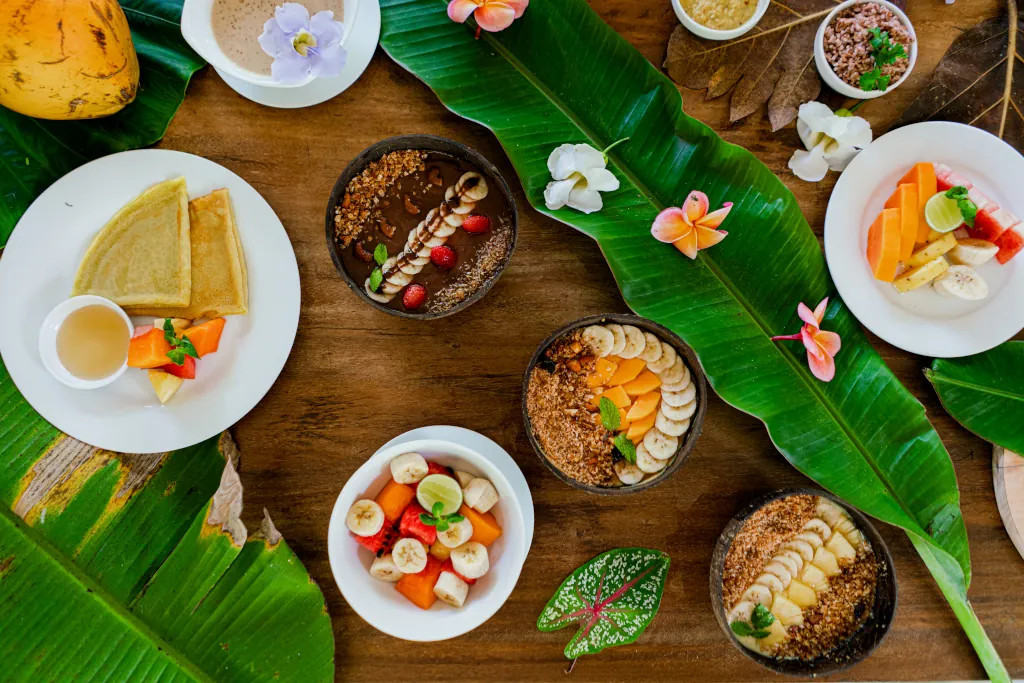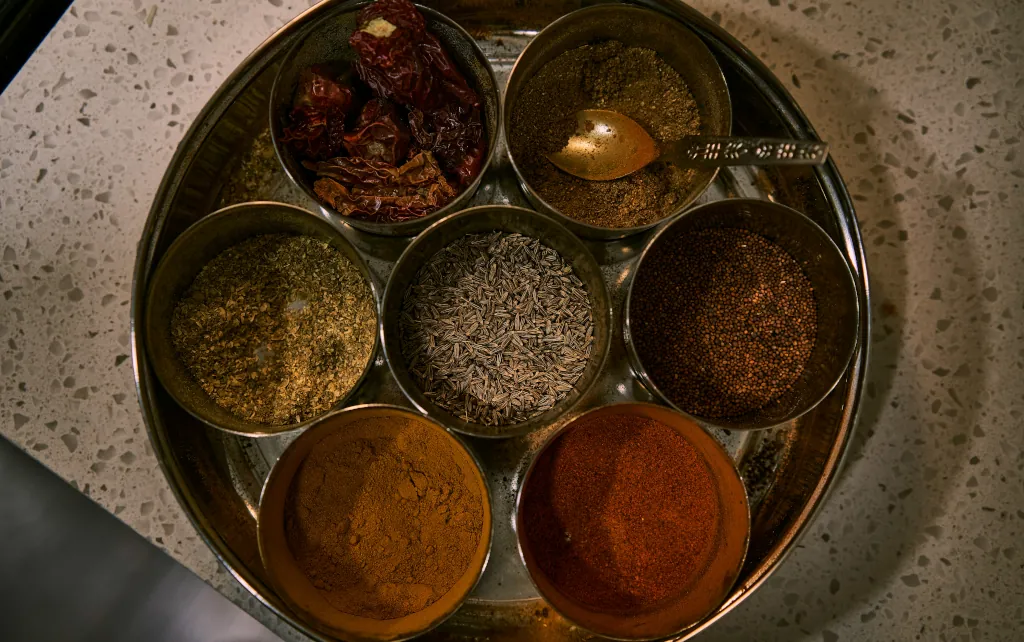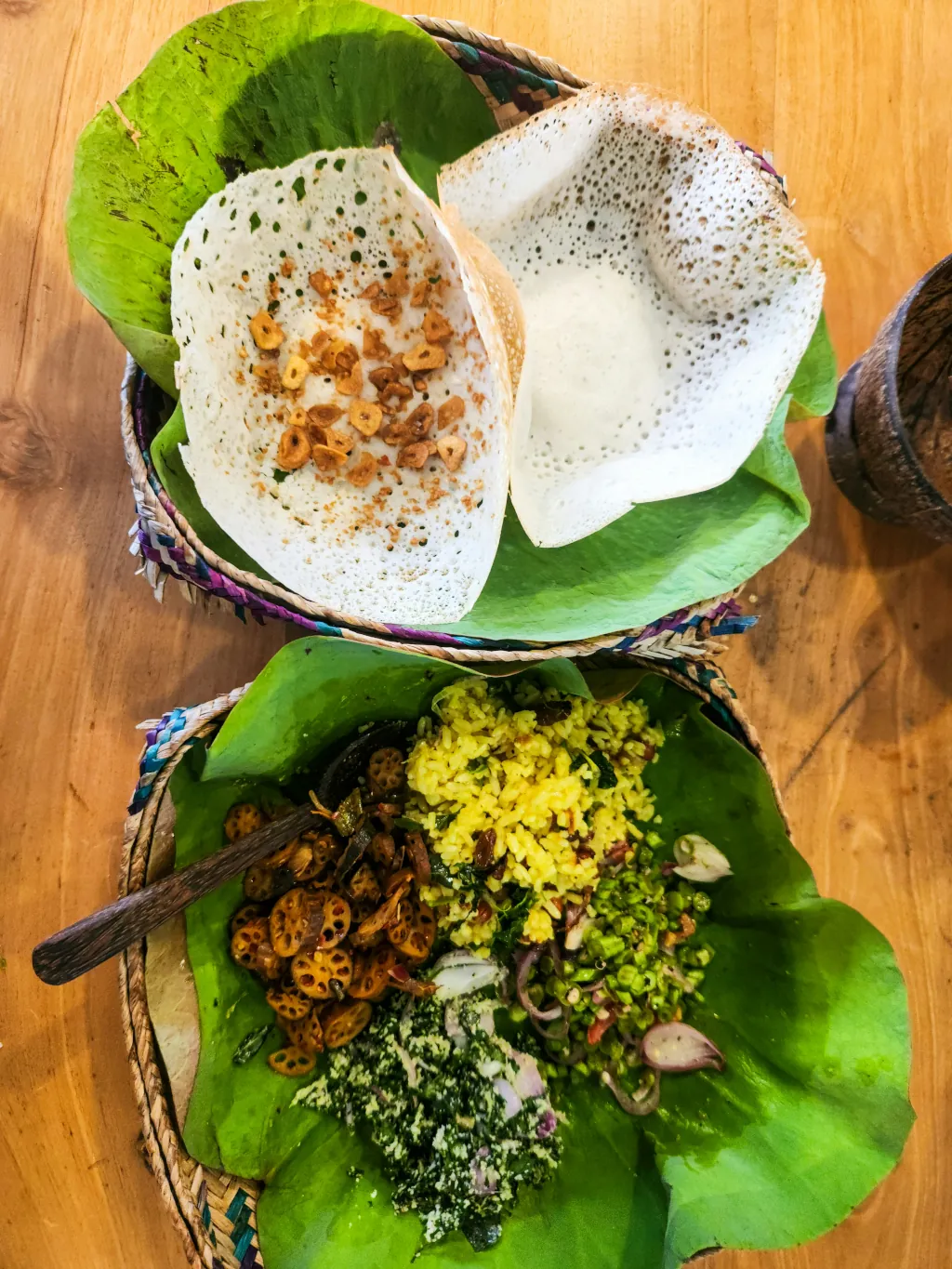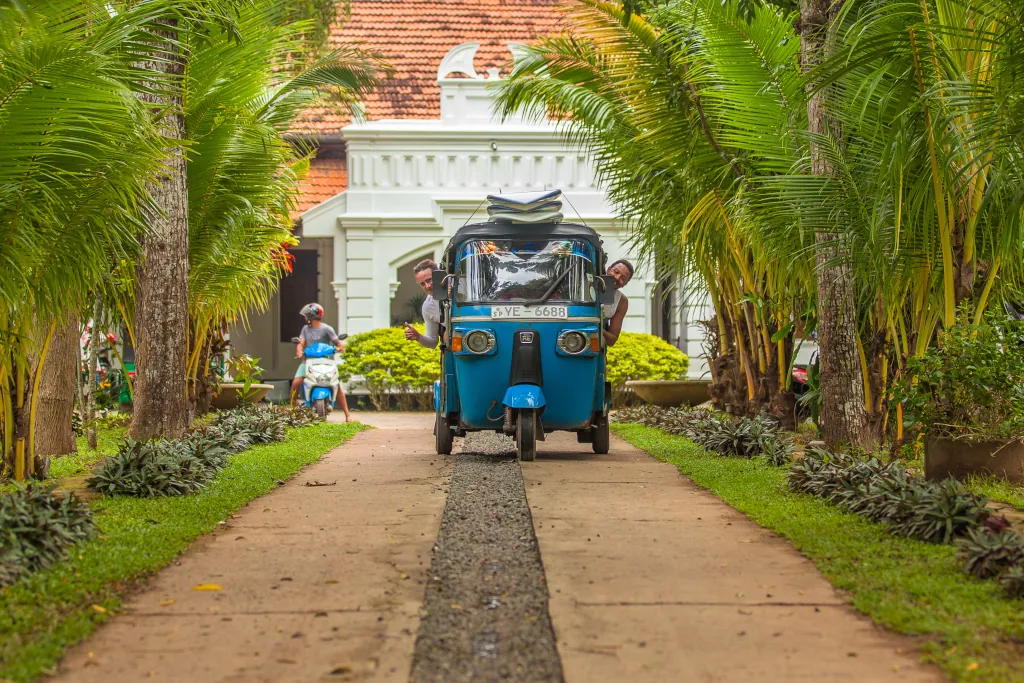A SRI LANKAN FOOD JOURNEY
TOP LOCAL DISHES
Sri Lanka’s rich spice scents, amazing street cuisine and hearty local dinners are ideal after a long day surfing Sri Lanka’s best spots. Sri Lanka is about more than perfect waves and tropical vibes. Your days at Kima Surf Sri Lanka are more than just surfing. Exploring the island’s cuisine is part of the trip, from the sweetness of watalappam to the hot spices of pol sambol. Ten classic Sri Lankan meals that you definitely must try will be presented to you in this blog post.

Some Foodie history
Sri Lanka has a rich culinary heritage because Sri Lanka is a tropical island with lots of vegetation, its cuisine uses a wide range of herbs, spices, fish, vegetables, grains and fruits. Many rice and coconut dishes are part of this local cuisine. Additionally, seafood is essential to cuisine.

Historically in Sri Lanka cooking rice was an art form and it was cooked in many different ways from spicy types, rice gruel and milk rice. Rice had cultural significance symbolised by kings giving milk rice to Buddhist priests—these culinary practices reveal the profound influence of Buddhism, the major religion in Sri Lanka, on its culinary traditions. Sri Lankan food is full of spices and surprises at first bite, perfect after a good surf session.
day Ten typical Sri Lankan Dishes
1. Curry and rice: A tasty combination
When you mention Sri Lanka, you think of rice and curry!. The curries come in many shapes and forms from vegetarian options or for the meat eaters some curries include fish, pork or seafood. Curries are made with a variety of spices and veggies like cardamom, cloves, cinnamon, curry leaves and chilli.
After an epic surf session, get your energy levels up at Kima with our Sri Lankan curry, a dish served with red or white rice, mango chutney, pickle and papadam..
2. Hoppers (Appam): AKA Breakfast Pancakes
Hoppers are a common breakfast choice in Sri Lanka. They are pancakes made from fermented rice flour. These pancakes are served with savoury sides like coconut sambol or dhal (lentil curry), hoppers are soft in the centre and crispy around the outside.
3. Indiappa: A treat
Additionally, string hoppers are a delicious breakfast option. Make a soft dough with rice flour and water to make these goodies. This dough is then passed through a string hopper press to create the noodles. Indiappa is prepared by steaming the long, stringy noodles. They go well with a range of curries, such as young jackfruit curry with spicy chicken or fish or they can be eaten by themselves. Locals also serve them with the customary pol sambol, a spicy coconut side dish.
4. Kottu Roti: Sri Lanka’s most popular street food
Find out what the most popular street food dish in Sri Lanka is. You would be greeted by the smells of different spices and the sound of street vendors using metal blades to make Kottu Roti. It is made using carefully chopped up flatbread with many other ingredients like eggs, vegetables and meat or fish. It is either eaten for dinner or as a late-night snack.
5. Lamprais: Savour the flavour
A remnant of Portuguese and Dutch colonial influence, lamprais is a well-liked and delicious dish. Rice, meat (usually lamb, beef or chicken plus a number of other ingredients such as plantains, eggplant and sambol make up this dish. After that, the contents are cooked after being covered in banana leaves. Families often eat this dish on Sundays, which is a day dedicated to family quality time. Making lamprais is a long process but the week-long effort is worth it.
6. Pol Sambol: Some Spice
Pol Sambol which is a traditional and simple side dish. This goes well with rice and curry or roti, giving the dish a spicy and tangy taste. Similar to how each Sri Lankan family has their own version of curry, this side dish comes in a variety of forms.
7. Roti Pol
Pol Roti is a popular type of flatbread made in Sri Lanka that is also referred to as coconut flatbread or coconut roti in Sinhala. It can be had as a midday snack or for breakfast, lunch or dinner. The components for pol roti include flour, grated coconut and a small amount of water.
This flatbread is incredibly soft and crispy when pan-fried. Sometimes they are served with a hot stew or spread and sandwiched between two rotis. Perfect breakfast to have on the run!
8. Wambatu Moju: very crunchy
Wambatu Moju uses eggplant with a sweet and tangy pickle taste with caramelised onions, chilli and spices. The texture of the deep-fried eggplants is crispy. This recipe’s unique flavour comes from the use of turmeric and Ralahami roasted curry powder which also makes a great side dish for any Sri Lankan meal. Serve this dish with chicken or vegetarian curry, fried rice or plain rice.
9. Kiribath: Enjoy the festivities in your mouth
This dish is eaten on weddings, birthdays, Buddhist rituals and the April Sri Lankan New Year Kiribath is a creamy treat made from rice and coconut milk. Its flavour is creamy as a result. It is occasionally sliced into squares and consumed with curry or a dash of local chilli paste.
Since kiribath is a representation of joy and wealth, families usually eat it on the first day of each month.
10. Watalappam: A sweet treat
For a sweet treat try watalappam made from cashews, coconut milk and spices like cardamom and nutmeg are used to make the delectable custard known as watalappam, which reflects the cultural diversity of Sri Lankan cuisine.

EXPERIENCE SRI LANKAN FOOD WITH KIMA!
For a taste of Sri Lanka, travel to Kima!

Be ready for more than just amazing surfing and fun social events—our delectable food is another highlight. The meals we serve at our Weligama and Hiriketiya Camps are influenced by Sri Lankan traditional cooking. Enjoy the flavours of our freshly prepared meals, which are a culinary journey inspired by the island’s culinary past.
Are you ready to eat Sri Lankan food and ride the best waves in the tropics? Make your reservation now to allow your taste buds to enjoy Sri Lanka’s delectable cuisine!
